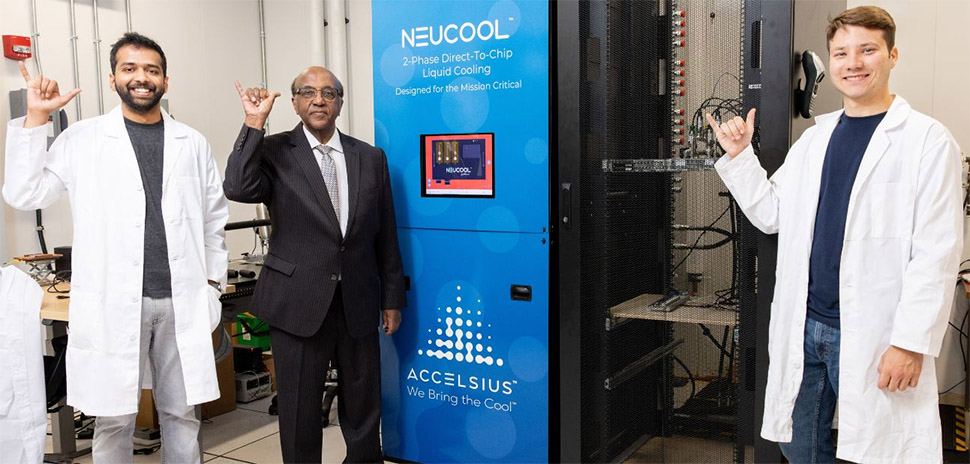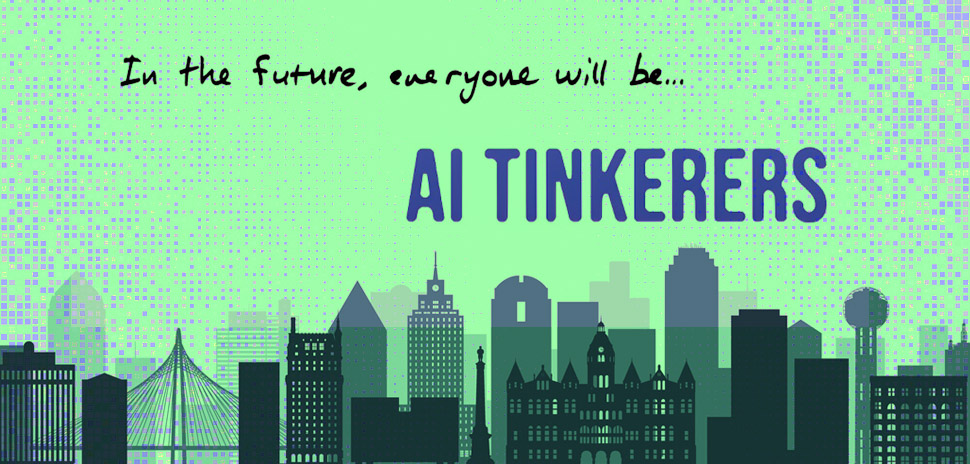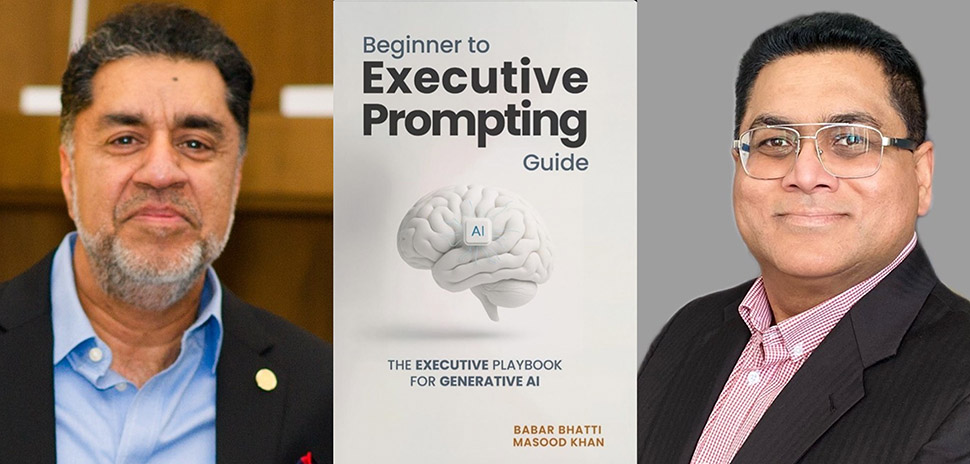
Dereje Agonafer’s team at UTA is is working to greatly reduce energy and water use as new AI data centers rapidly rise in Texas
As AI infrastructure scales across Texas and the nation, a team at the University of Texas at Arlington is working to solve one of the sector’s biggest energy challenges: how to cool the massive data centers powering generative AI without overwhelming electricity and water systems.
The project is led by UT Arlington professor Dereje Agonafer. It’s part of the Department of Energy’s COOLERCHIPS initiative, a $42 million program launched in 2022 to rethink how data centers are cooled. The acronym stands for Cooling Operations Optimized for Leaps in Energy, Reliability, and Carbon Hyperefficiency for Information Processing Systems. It’s a mouthful that reflects the program’s mission to cut energy use in AI and high‑performance computing.
Agonafer is targeting a dramatic reduction in cooling energy use. He wants to reduce cooling energy use from as much as 40% of a data center’s total load to under 5%. Many large‑scale centers also rely on evaporative systems that use hundreds of thousands of gallons of water each day.
Texas as testbed
Texas has become a major destination for large‑scale data centers. Land availability, tax incentives, and existing energy infrastructure have helped drive that growth. But it comes with a cost.
The Electric Power Research Institute estimates that U.S. data centers could consume up to 9% of the nation’s electricity by 2030. In Texas, the state’s main grid operator expects data center electricity demand to more than double. It’s projected to grow from 4.6% in 2023 to nearly 11% by 2030, according to UTA.
Water use is rising, too. Many facilities use evaporative cooling systems that consume massive volumes of water. According to the Texas Tribune, Texas data centers will use 25 billion gallons of water in 2025, about 0.4% of the state’s total. That number could rise to 2.7% by 2030—the annual water use of 1.3 million U.S. households.
UT Arlington’s national research role
Agonafer is a member of the National Academy of Engineering and a Presidential Distinguished Professor at UTA. He’s working with teams from the University of Maryland, the University of Illinois Urbana‑Champaign, and the Illinois Institute of Technology. Their shared focus is how to reduce energy and water use in increasingly dense server environments.
“The computing power needed to support AI is growing at an exponential rate,” he said in a statement. “If we don’t find smarter, more efficient ways to cool data centers, the environmental impact will be significant. Our goal is to deliver a scalable solution that is both energy‑efficient and environmentally responsible.”
Commercial tech from Austin startup
UTA’s research includes a partnership with Accelsius, an Austin‑based startup building two‑phase, direct‑to‑chip liquid cooling systems. The company is contributing its MR250 Coolant Distribution Unit, designed for high‑density server environments. The hardware supports modular, scalable liquid cooling.
Accelsius raised $24 million in Series A funding last year to expand its technology for the AI market.
A DOE moonshot
At the 2024 Data Center World conference, ARPA‑E program director Peter de Bock described COOLERCHIPS as a moonshot program. The agency is funding immersion cooling, direct‑to‑chip approaches, and other methods.
“We intend to have a proof of concept by the first half of 2026,” de Bock said. “By 2030, the country with the most efficient, powerful, and lower‑TCO data centers will be at a major advantage,” he told Data Center Knowledge.
Real-world experience for students
Graduate students Sai Pundla and Braxton Smith are part of Agonafer’s team. They’re getting hands‑on experience in system‑level testing and thermal management—skills that are increasingly needed as data center demand grows, according to UTA.
“Being part of this project has been an incredible opportunity to apply what I’ve learned in the lab to a real‑world challenge with global implications,” said Smith in a statement.
DFW and Texas data center growth
More than 400 data centers operate in Texas today. About 70 more are in development, according to the Texas Tribune. That growth is especially concentrated in North Texas.
Dallas‑Fort Worth ranks as the No. 2 data center market in North America, according to JLL research. Development across the region is accelerating to meet rising demand, with several multibillion-dollar projects underway—many focused on high-density, high-performance workloads, including:
In Fort Worth, Taiwan‑based Wistron Corp. is investing $750 million to build two new AI supercomputing facilities. The project was announced in August and is designed to support the next generation of AI hardware and training capacity.
In Grand Prairie, PowerHouse and Provident are planning a new 360,000‑square‑foot two‑story building valued at $300 million. The expansion is scheduled for completion in 2027.
In Wilmer, Stream Data Centers is expanding its 140‑acre campus with a new 360,000‑square‑foot two‑story building valued at $300 million. The expansion is scheduled for completion in 2027.
In Red Oak, Gigabit Fiber and two Dallas‑based partners are building a build a hyperscale data center campus with capacity for 550 megawatts of critical IT load.
In Lancaster, London‑based Yondr Group has acquired a 163‑acre site to build a hyperscale data center campus with capacity for 550 megawatts of critical IT load.
At the state level, OpenAI’s Project Stargate is driving even more scale. The new data centers put Stargate ahead of schedule to secure a $500 billion, 10‑gigawatt commitment by the end of 2025, the company said in an announcement last week. OpenAI, in partnership with Oracle and SoftBank, announced five new campuses in September, alongside its flagship campus in Abilene, Texas.
“Data centers are the backbone of the 21st‑century economy, and they’re economic drivers for D‑F‑W and in Texas communities,” said Dan Diorio, vice president of state policy at the Data Center Coalition, in the Dallas Morning News this week.
Don’t miss what’s next. Subscribe to Dallas Innovates.
Track Dallas‑Fort Worth’s business and innovation landscape with our curated news in your inbox Tuesday‑Thursday.
R E A D N E X T
-

Data scientist Anmolika Singh put Dallas on the global AI Tinkerers map. At the first meetup, more than 30 pros—founders to Fortune 500 technologists—showed up to trade ideas, projects, and solutions.
-

North Texas has plenty to see, hear, and watch. Here are our editors’ picks. Plus, you’ll find more selections to “save the date.”
-

Dallas Innovates, in partnership with the Dallas Regional Chamber, once again is recognizing the most innovative leaders in AI in Dallas-Fort Worth. From visionaries and mavericks to transformers and academics, AI 75’s class of 2025 are the AI pacesetters you need to know now.
-

AI seem overwhelming? Just go to office hours.
-

Most people are getting AI all wrong—asking random questions and getting mediocre results, say Babar Bhatti and Masood Khan. Their new guide shows how to prompt like a pro and turn AI into your strategic team.